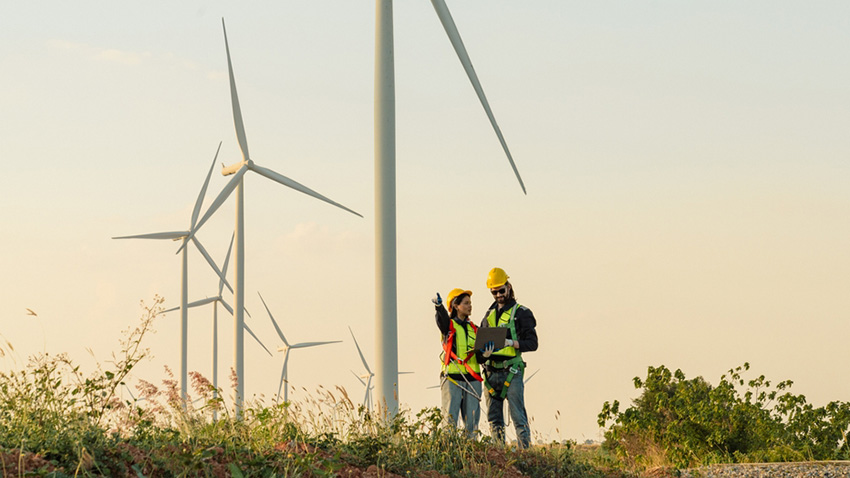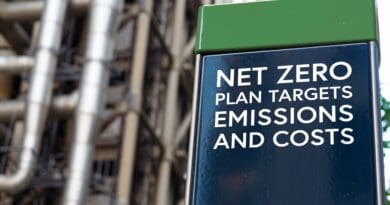Community energy clubs promise savings of up to 30% on household electricity bills

As energy prices edge higher with the arrival of colder weather, a growing number of households are turning to a new model of community-led energy that promises substantial savings.
Energy Local, a non-profit social enterprise, is enabling residents to join local energy clubs that can cut electricity bills by as much as 30% by matching consumption with power from nearby renewable projects.
The initiative allows consumers to form a cooperative-style club that partners with a local clean energy generator such as a wind turbine, hydro project or solar farm. Members agree to pay a discounted tariff for electricity used during periods when the local generator is producing energy. Smart meter technology is used to measure half-hourly usage and match it to local generation, creating what Energy Local describes as a “hyper-local energy market”.
One such club in Bridport, Dorset, launched in 2021 after local farmer Peter Bailey installed a wind turbine on his land. Almost 60 residents have since signed up, and founder member Malcolm Drew says the direct link between weather conditions and energy cost is changing behaviour. “You know on a windy day that it’s generating power,” he explains. “The website shows wind speed and output, so people are timing their usage accordingly.”
Co-founder Richard Toft says members are reaping financial benefits. “Depending on personal habits, people are saving anywhere between 10% and 25%,” he reports. Demand to join the Bridport scheme now exceeds capacity, prompting discussions about expanding through a cooperative-funded solar farm.
Energy Local was founded in 2016 by electrical engineer Dr Mary Gillie, who saw first-hand the frustration of residents in Ashton Hayes, Cheshire, who were eager to embrace local solar power but lacked a way to ensure they were actually using it. The rollout of smart meters provided the breakthrough needed to link consumption to local generation.
Today, Energy Local supports 36 clubs across Great Britain, with schemes stretching from Scotland to Devon. By working with energy suppliers to negotiate special tariffs, the organisation ensures that local generators earn more than they would by selling their output to the grid, while consumers pay less than standard retail rates — a model Gillie describes as “a win-win”.
In Brixton, south London, the model has been used to breathe new life into an existing solar installation on a social housing block at Roupell Park. The project, owned collectively by residents through community group Repowering London, now powers around 18 households at discounted rates. “People feel genuinely empowered,” says co-founder and CEO Afsheen Kabir Rashid. “Community energy keeps the benefits local and tackles fuel poverty head-on.”
However, savings depend on consumers adapting their behaviour. Energy Local encourages members to run appliances such as washing machines when renewable generation is at its peak. Typical peak usage between 4pm and 8pm can be costly if local supply is low, while off-peak “green windows” can offer much lower rates.
Gillie argues that shifting behaviour is central to the long-term sustainability of the national grid. “If we can get people to use more power when local generation is running, we ease pressure on the network and cut bills,” she says. But she cautions against viewing community schemes as a replacement for central infrastructure. “We still need a robust national grid,” she adds. “Local energy takes us part of the way, but large-scale investment is essential.”
Recent rises in network costs underscore that challenge. On 1 October, the average dual-fuel price cap for direct debit customers increased by £35 to £1,755 a year. “We are now paying for infrastructure investment that should have happened 15 years ago,” Gillie notes.
With the UK seeking to decarbonise electricity generation and reduce reliance on gas turbines, local generation projects may prove increasingly valuable. They offer a glimpse of a future where neighbourhoods can benefit directly from the renewable energy produced around them.
How Energy Local clubs work — and how to join
• Energy Local clubs are registered cooperatives linking residents with a nearby renewable energy project.
• Members need a smart meter to track usage every half-hour.
• The club sets a discounted rate for electricity used when local generation is active.
• Extra electricity used outside renewable output is supplied by a selected partner energy supplier, which members must switch to.
• Typical savings range from 10% to 30%, though standing charges still apply.
• An online dashboard helps users plan energy use based on daily renewable output forecasts.
• A full list of active and upcoming clubs is available on the Energy Local website, where interested households can also register their interest in forming a new group.





